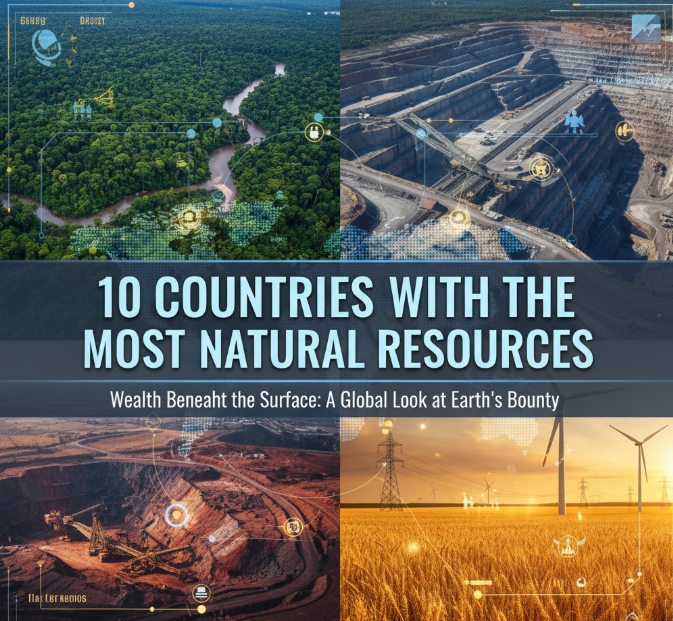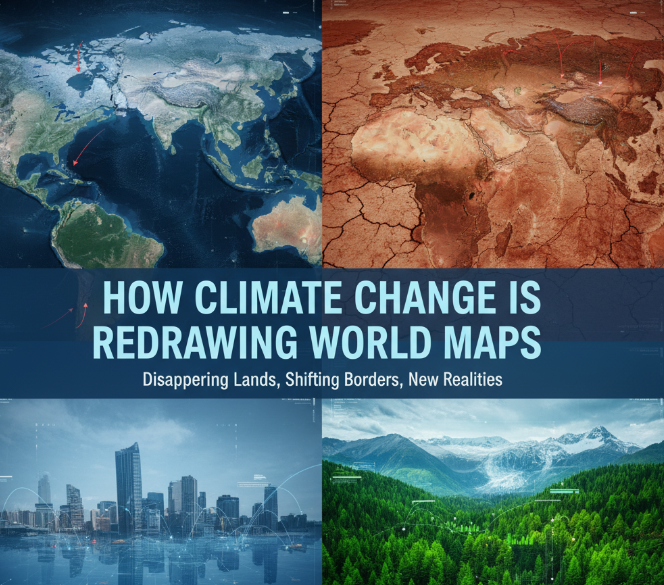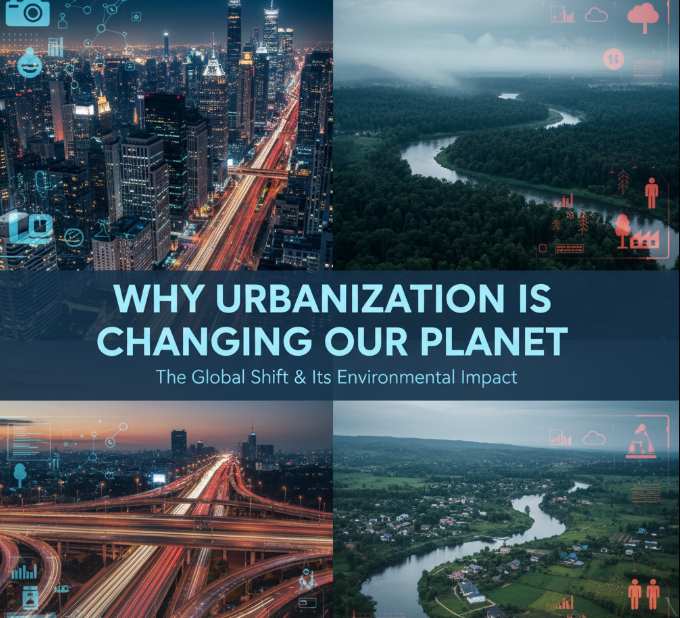Our world is rich with resources hidden in its soils and beneath its surfaces. From precious metals beneath the Earth’s surface to bamboos that cover thousands of miles of land, natural resources inform the economics of our world and play a part in influencing which countries have the most power. A few countries have been lucky to end up with vast reserves of these precious materials, a windfall in the world of global commodity trade and economic development.
Natural resources comprise everything from oil and natural gas to minerals, timber, water and fertile land. These are the materials that drive your car, construct your city, feed your family and create the technology you use daily. The nations that hold the most of these commodities become economic superpowers as they export them to thirsty countries in demand.
In this post, we bring you the 10 countries with the most natural resources in the world. We will examine what makes that nation unique, the natural resources it has and how these materials affect that nation’s economy. Be it Russia’s vast energy resources, China’s rare earth minerals or Brazil’s wealth of agricultural potential — every country on this list serves a vital role in the global value chain.
Why Are Some Countries Rich in Natural Resources?
Before we get to the list, you should be aware of what we are referring to when we say “natural resources.” These are things that occur in the natural environment, and that can be put to economic use. They are commonly classified by scientists and economists into a few different categories:
Energy resources include oil, natural gas, coal and uranium. Such fuels are used to fuel vehicles, produce electricity and heat homes of people all over the world.
Mineral resources range from iron ore and copper to gold, diamonds and rare earth elements, used in smartphones and computers.
Natural agricultural resources, such as nutrient-rich soil, temperature appropriate for growing food due to favorable climates, and an adequate amount of rainfall.
Forests cover the earth, and produce wood material for building, paper for writing – and they are the world’s lungs creating oxygen.
Water resources such as rivers, lakes and underground aquifers used for drinking water and agriculture.
Natural resources make the earth worth countless trillions of dollars. This is based on having as of that time available X number of resources and what was the current market value for all those resources.
The Natural Wealth Leading Nations on the Planet
| Rank | Country | Estimated Value of Resources | Key Resources |
|---|---|---|---|
| 1 | Russia | $75+ trillion | Oil, natural gas, timber, gold |
| 2 | United States | $45+ trillion | Coal, timber, natural gas, gold |
| 3 | Saudi Arabia | $34+ trillion | Oil and gas |
| 4 | Canada | $33+ trillion | Oil sands (bitumen), uranium, timber |
| 5 | Iran | $27+ trillion | Oil and gas |
| 6 | China | $23+ trillion | Rare earth minerals, coal, timber |
| 7 | Brazil | $21+ trillion | Gold, iron ore and wood resources |
| 8 | Australia | $19.9 trillion | Coal, iron ore, gold |
| 9 | Iraq | $15.9 trillion | Oil and gas |
| 10 | Venezuela | $14 trillion | Oil and gas |
Russia: The Undisputed Resource Giant
With 146 square miles of land per citizen, Russia remains the largest country by land area in the world, and with an enormous amount of territory comes an absolutely massive amount of resources. Russia’s natural resources are worth in excess of $75 trillion, and it has the largest material reserves on Earth.
Energy Dominance
Russia has the world’s largest natural gas reserves and its proven reserves total around 48 trillion cubic meters. This gas warms homes throughout Europe and fuels industries around the world. The country is also one of the world’s largest oil producers, pumping just under 10 million barrels per day from giant fields in Siberia and Russia’s Far East.
Another area of Russian strength is coal. The nation has the world’s second-largest coal reserves, enough to last centuries at current production levels. These coal fields extend over enormous territories, most particularly in Siberia.
Minerals and Metals
In addition to energy, Russia is enormously rich in metallic ores and minerals. It is the world’s leading producer of palladium — a metal that is key in catalytic converters found in cars and some other electronics. That’s not all – Russian mines produce a fairly large amount of gold as well, enough to put it in the top three global producers.
From Russian mines flow iron ore, nickel, aluminum and diamonds in amounts that few other countries can match. The Ural Mountains alone are home to dozens of different valuable minerals.
Forests and Timber
Russia’s forests extend over 8 million square km, and comprise a fifth of the world’s forested land. These vast woodlands supply timber, soak up carbon dioxide and are home to countless species of wildlife. The forestry industry is worth billions of dollars to the Russian economy each year.
USA – A Wealth and Wide Range of Resources
The U.S. is second in the world with assets of $45 trillion. What makes America unique is the incredible diversity of our resources across 50 states.
Coal Country
The U.S. possesses more recoverable coal reserves than any other nation, with over 250 billion tons. They exist under Appalachian, Wyoming and other deposits. Use of coal has diminished because health concerns over dirty fuels, but the reserves still offer great potential economic value.
Timber and Agriculture
U.S. forests grow more timber than any country other than Russia. The West Coast, the Southeast and other regions are home to large forestry industries. And at the same time, the Great Plains are one of the most agriculturally productive places in the world, producing wheat, corn and soybeans that feed billions of people.
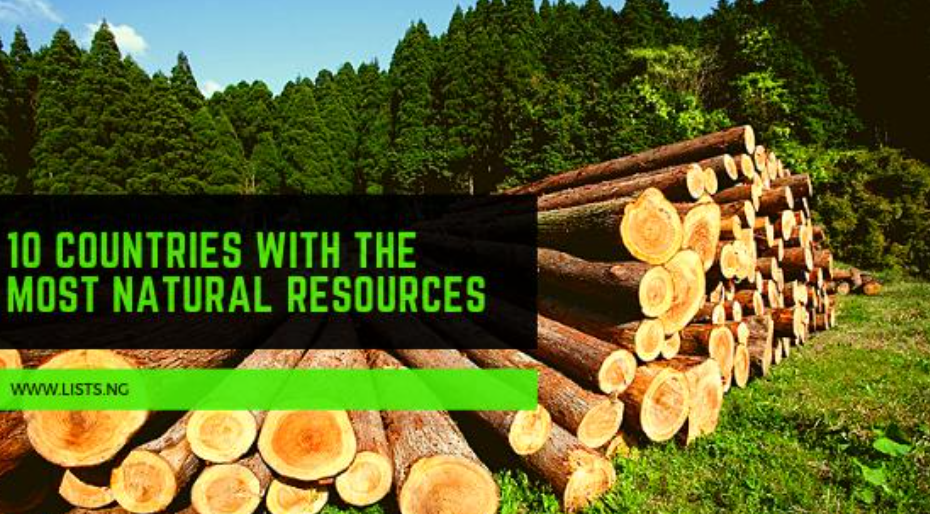
Precious Metals and Rare Earths
The United States produces a large amount of gold, mostly from Nevada and Alaska. The country is also home to rare earth mineral deposits, although it does not currently mine anywhere near the quantity mined by China. They are crucial elements in modern technology, including the batteries in smartphones and electric vehicles.
Energy Independence
The shale oil revolution in America turned the country from a net importer into a major exporter of energy. Companies today extract millions of barrels of oil a day from formations in Texas, North Dakota and other states by way of hydraulic fracturing and horizontal drilling. Natural gas production has surged as well, with the U.S. now the world’s top natural gas producer.
Saudi Arabia: Petroleum Paradise
Oil is the only thing Saudi Arabia’s economy runs on. The kingdom has proven reserves of some 267 billion barrels, about 17 percent of the known global total.
Black Gold Beneath the Sand
Ghawar Field, the world’s biggest conventional oil field, is based in eastern Saudi Arabia. This lone field has yielded more oil than any other in history. Saudi oil is also relatively cheap to produce — pumping it can cost as little as a few dollars per barrel, versus $40-50 for American shale oil.
The oil producing country currently supplies around 10-11 million barrels a day, which has made it one of the world’s top three producers according to the United States and Russian Federation. This output brings in hundreds of billions of dollars a year in export earnings.
Natural Gas Resources
And despite the focus on oil, Saudi Arabia also sits atop a vast natural gas bounty – 9 trillion cubic meters. The kingdom has been developing these gas fields in an effort to cut back on domestic oil consumption, and keep more crude available for export.
Limited But Valuable Minerals
In addition to hydrocarbons, Saudi Arabia has gold, silver, copper, and zinc deposits. The government has worked extensively to develop its mining sector, as part of efforts to reduce dependence on oil.
Canada: Northern Abundance
Canada has more than $33 trillion worth of natural resources, therefore it is one of the richest countries in terms of raw resources. The nation’s large size means it has everything from oil to uranium to freshwater.
Oil Sands Revolution
Alberta’s oil sands are home to the third largest proven reserves of crude oil in the world, behind only Venezuela and Saudi Arabia. There are an estimated 170 billion barrels of recoverable oil contained in these deposits. More complicated and costly than conventional drilling, extraction of these resources is what gives Canada its status as a petroleum superpower.
Mining Excellence
Canada is in the top five mineral producers in the world. The country’s also got more potash (for fertilizers), uranium (used for nuclear power), gold, nickel and aluminum than you can shake a stick at. The Canadian Shield is a geologically rich formation that spans much of the country and holds tremendous mineral wealth.
Forest Resources
Canadian forests extend over approximately 347 million hectares, which represents close to 9% of the world’s forested area. These forests are the source of significant timber and paper products production, particularly in British Columbia and Quebec.
Freshwater Wealth
Canada is home to approximately 20 per cent of the planet’s fresh water. So consider that as water becomes more precious amid climate change, the most valuable thing Canada has in a generation or two may not be minerals or energy, but this very resource.
Iran: Energy Rich Despite Challenges
Iran has the world’s 4th biggest proven oil reserves and the second-largest natural gas reserves, valued at an estimated $27 trillion. Unfortunately, the country has been unable to exploit these endowments to their fullest owing to international sanctions.
Massive Gas Fields
The South Pars/North Dome Gas-Condensate field is the world’s largest natural gas field, of which part is being extracted and shared with Qatar. There are an estimated 14 trillion cubic meters of gas in Iran’s section alone, sufficient to meet world demand for years.
Oil Legacy
Iran has been pumping oil for more than a century. The nation’s proven reserves are more than 150 billion barrels, most concentrated in the southern regions abutting the Persian Gulf. Iran would have the capacity to ramp up production dramatically and once again become a major oil exporter if sanctions were lifted.
Mineral Deposits
Besides hydrocarbons, Iran has copper, iron ore, zinc and other minerals. The nation’s mining industry is limited and produces small amounts of gold and silver.
China: Rare Earth Dominance
China ranks sixth by overall value of resources. China’s overall resource value stands at $23 trillion. While as a purchaser China might be fairly insignificant, but in certain materials it becomes very significant when you look at what China controls and its impact on world markets.
Rare Earth Monopoly
China mines some 60% of the world’s rare earths and refines more than 85% of the global supply. These 17 elements are critically important to make everything from wind turbines to guided missiles to smartphones. This near-monopoly provides China with immense geopolitical leverage.
Coal Reserves
China has the world’s fourth largest coal reserves and may consume more coal than any other nation. Though this comes with major pollution problems, coal is still an indispensable source of power for Chinese industry and electricity.
Other Resources
China is also a major producer of iron ore, gold, aluminum and other metals. Its forests — while not as vast as Russia’s or Canada’s, they are home to about 220 million hectares.
Brazil: Agricultural and Mineral Wealth
Brazil’s abundance of resources, which is estimated to be around $21 trillion, comes from a unique combination of minerals, forests and lots of farmable land.
Mining Giant
Brazil is the second largest producer of iron ore in the world, with large deposits in the Minas Gerais region. Not only does the country have significant copper production, but it is one of the world’s largest gold producers. Bauxite (used for aluminum) and manganese are other important minerals, as is tin.
Amazon Riches
The Amazon rainforest is spread across an area representing about 60% of Brazil. The tremendous ecosystem comprises myriad species of plants and animals, vents oxygen, captures carbon, and stores a huge amount of timber. The forest is priceless, although conservation concerns restrict logging.
Agricultural Powerhouse
Between perfectly proper weather, plentiful rain and huge fields of arable land, one would never guess it was possible for Brazil to be anything less than an agricultural superpower. The nation is the world’s top exporter of coffee, sugar and orange juice, and soybeans. Brazilian beef and poultry are leaders in global meat markets as well.
Australia: Mining Down Under
Australia’s $19 trillion abundance of resources is drawn mostly from mining. The country has come to be the largest provider of China’s raw material for industry.
Iron Ore King
Australia is the world’s largest iron ore producer, churning out about 900 million tons of the commodity a year. The majority is mined from huge open-pit mines in Western Australia. Australian ore is vital to Chinese steel mills.
Coal Exports
Australia is the world’s largest exporter of coal — both thermal coal (used to generate electricity) and metallurgical coal (used in steel manufacture) — which goes to Asian markets. The country has more than 75 billion tons of coal reserves.
Gold and Other Minerals
Australia is always vying with China as the world’s No.1 or No.2 gold producer, but in 2019 that competition went right down to the wire; It and China produced an equal amount of the precious yellow metal last year – 330 tonnes apiece. The country also produces large amounts of bauxite, copper, uranium and lithium and other minerals necessary for modern technology.
Iraq: Petroleum Potential
As a key depositary of some 145 billion barrels of oil, Iraq shares with other such endowed lands total endowments valued at $15 trillion in natural wealth.
Oil Reserves
Iraq is home to the world’s fifth-largest proven reserves of oil. The super-giants in the south of Iraq next door to Basra hold billions of barrels of easy-to-get-at crude. Today the country is producing something like 4-5 million barrels per day, but it can produce much more if its oil-laden infrastructure improves.
Natural Gas
Iraq’s oil fields also produce associated gas, netting the country significant reserves of natural gas, but much of that has been flared in the past rather than harnessed for use or export.
Underdeveloped Potential
Years of war and chaos have kept the country from fully capitalizing on its resources. Insecurity dampening investment, the country could significantly ramp up production and grow even wealthier.
Venezuela: Troubled Treasure
Venezuela has the world’s largest proven oil reserves, totaling approximately 304 billion barrels considered to be worth $14 trillion as of 2015. Yet economic mismanagement and political turmoil have prevented the country from exploiting that wealth.
Oil Reserves
Extra heavy crude oil deposits are found in the Orinoco Belt along with lighter crude as well. Although harder and costlier to process than lighter crude, the volume is enough to make Venezuela on paper one of the world’s most oil-rich countries.
Production Collapse
For all its oil reserves, Venezuela’s production has crashed from more than 3 million barrels a day in the 1990s to less than one million recently. Divestment, corruption and sanctions have gutted the state oil company.
Other Resources
In addition to oil, Venezuela has reserves of gold, iron ore, bauxite and natural gas. The country also has access to hydroelectric power, and large dams produce electricity.
Why Natural Resources Matter
The nations on this list are some of the world’s most powerful, whether because of their economic status or the political influence it commands. When Russia cuts gas supplies to Europe, the price of it goes through the roof in every country. When Saudi Arabia reduces its oil production, gasoline becomes more expensive around the world. When China clamps down on exports of rare earths, technology companies search for alternative supplies.
Economic Development
Export revenues from natural resources can be used by resource-rich countries for developing infrastructure, educating the population and for maintaining living standards. Norway, for instance, has leveraged its North Sea oil riches to produce one of the highest living standards in the world.
The Resource Curse
But too much dependence on assets can be risky. This “resource curse” occurs when countries ignore other industries, become corrupt or suffer through boom-bust cycles that follow commodity prices. Venezuela is an example of how resource riches can be squandered through mismanagement.
Environmental Concerns
It frequently causes environmental harm through resource extraction. Oil spills dirty oceans, mining scars landscapes and deforestation fuels climate change. Sustainable use of resources is probably one of the most difficult challenges to mankind. Learn more about sustainable resource management and environmental protection.
The Future of Natural Resources
The value of various resources will shift as the world moves toward renewable energy and sustainable practices. Oil could lose its luster as electric vehicles increasingly take the place of gasoline cars. Meanwhile, lithium, cobalt and rare earths will grow more valuable for battery production.
The most important resource of the 21st century could be water. Nations that possess ample freshwater sources, such as Canada and Russia, may become increasingly important as climate change and growing populations bring water shortages to other parts of the planet.
The countries on this list will still play an outsized role in the global economy, but how they manage and utilize their resources is the key question of whether that wealth becomes a blessing or a curse.
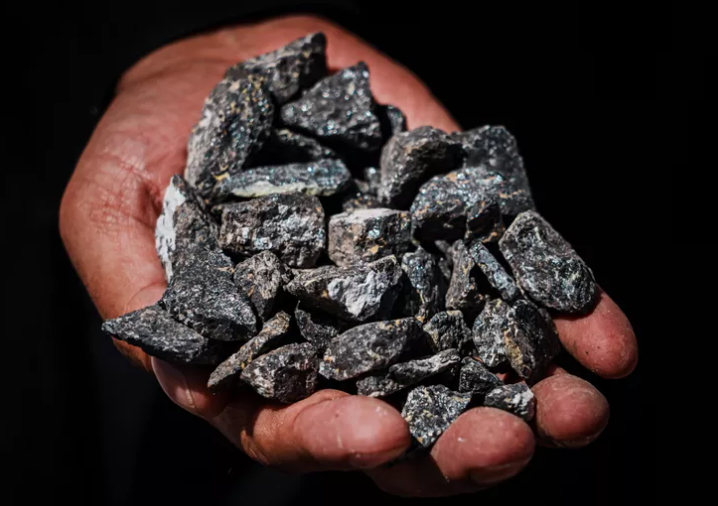
Frequently Asked Questions
Which is the richest country in natural resources?
Russia boasts as the world’s richest country on earth based on its natural resources, their estimated value in excess of $75 trillion! The vast territory of the country holds huge reserves in oil, natural gas, coal, wood and gold — as well as many other minerals. If nothing else, Russia is the resource king of the world when it comes to energy.
How does Saudi Arabia make the ranks with essentially only oil?
Saudi Arabia comes in third, but that’s simply because its oil reserves are so large (about 267 billion barrels of proved reserves). Oil is the planet’s most important commodity, and Saudi Arabia holds some of the lowest-cost reserves — nearly 270 billion barrels at a cost-neutral price of $25 to $30 per barrel with potentially trillions in superprofit oil on tap.
What are rare earths, and why do they matter?
With the exception of one radioactive species, these 17 chemically similar metals are vital components of today’s most sophisticated technologies. They are used in smartphones, computers, electric vehicles, wind turbines and military equipment. As a result of China’s production dominance in rare earth minerals (60% mining, 85% processing), they have very powerful leverage on technology supply chains around the world.
Can a nation actually run out of natural resources?
Yes, oil, coal and minerals—among other nonrenewable resources—are finite. They are being depleted and used up, never to be restored on human time frames. But new exploration technologies do have a way of finding previously unknown deposits, and ‘proven reserves’ go up when prices rise and some waterborne shale oil in an unlikely location becomes economically recoverable. When renewable resources like forests or fish are managed responsibly, they can be sustainable.
What is the impact of natural resources on a country’s economy?
Exports revenue, employment and industrial development can be enhanced by natural resources. But they can also bring trouble, like the “resource curse,” where countries overrely on exporting commodities, with corruption, a lack of investment in other sectors and volatile prices. Successful endowed countries like Norway and Canada have diversified their economies, while poorly managed ones like Venezuela have frittered theirs away.
What will happen when natural resources are no longer available?
When there is scarcity of resources, price goes up, giving a value to an otherwise not worth developing deposit. Nations and individuals also produce alternatives — such as renewable power to take the place of fossil fuel, or synthetic over natural materials. History also teaches us that human ingenuity has a tendency to generate substitutes long before any resources are really gone, though such transitions can be brutally harsh on the economy.
In which country is the most water?
Brazil has the largest renewable fresh water supply in the world, followed by Russia, Canada, and the United States. Together these four nations control roughly 40% of the world’s fresh water. If we are in for a future of water scarcity thanks to climate change then fresh water might well become one our most precious commodities.
Are natural resources good or bad for a country?
Natural resources are not good or bad in themselves — they depend on how you manage them. Nations such as Norway have turned oil profits into prosperity and high living standards. Still others (think Venezuela) fell victim to corruption, poor economic management and societal collapse despite massive resource wealth. Strong institutions, diversified economies and environmental protection underpin the transformation of resources into enduring benefits.
Conclusion
The 10 countries whose fortunes we followed are some of the resource-richest on earth. From Russia’s unparalleled stockpile of energy to China’s domination of the market for critical rare earth minerals, there is a global race underway to control the resources that power the economy and from which other technologies are derived. These countries’ monopoly control over vital materials has garnered attention due their importance in everyday life for billions of people.
Natural resources have decisively influenced the course of human history, dictated the outcome of countless wars, and generated both wealth and poverty. These countries are all incredibly strong economic powerhouses, but the title of will also take level headedness and wise decisions.
As we head into a future that is more sustainable, the concept of “resource wealth” can evolve. Renewable energy, water and sustainable forestry are likely to become more valuable than fossil fuels. Nations that embrace these shifts and find ways to preserve their environments will flourish, but those that cling to the old ways of extracting wealth may see it slide away.
Knowing which countries have the most natural resources can certainly be a good starting point for guiding our resource curse politics, global trade events and economic policy. These 10 countries will increasingly shape the world’s destiny in decades ahead, and whether these nations manage their land and energy resources wisely is vital not just for their own citizens but for all of us.

